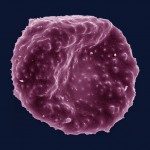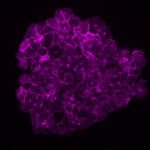Lien vers Pubmed [PMID] – 29109477
Lien DOI – 10.1038/s41564-017-0054-x
Nat Microbiol 2018 Jan; 3(1): 17-25
The causative agent of malaria, Plasmodium, replicates inside a membrane-bound parasitophorous vacuole (PV), which shields this intracellular parasite from the cytosol of the host cell 1 . One common threat for intracellular pathogens is the homeostatic process of autophagy, through which cells capture unwanted intracellular material for lysosomal degradation 2 . During the liver stage of a malaria infection, Plasmodium parasites are targeted by the autophagy machinery of the host cell, and the PV membrane (PVM) becomes decorated with several autophagy markers, including LC3 (microtubule-associated protein 1 light chain 3) 3,4 . Here we show that Plasmodium berghei parasites infecting hepatic cells rely on the PVM transmembrane protein UIS3 to avoid elimination by host-cell-mediated autophagy. We found that UIS3 binds host LC3 through a non-canonical interaction with a specialized surface on LC3 where host proteins with essential functions during autophagy also bind. UIS3 acts as a bona fide autophagy inhibitor by competing with host LC3-interacting proteins for LC3 binding. Our work identifies UIS3, one of the most promising candidates for a genetically attenuated vaccine against malaria 5 , as a unique and potent mediator of autophagy evasion in Plasmodium. We propose that the protein-protein interaction between UIS3 and host LC3 represents a target for antimalarial drug development.



